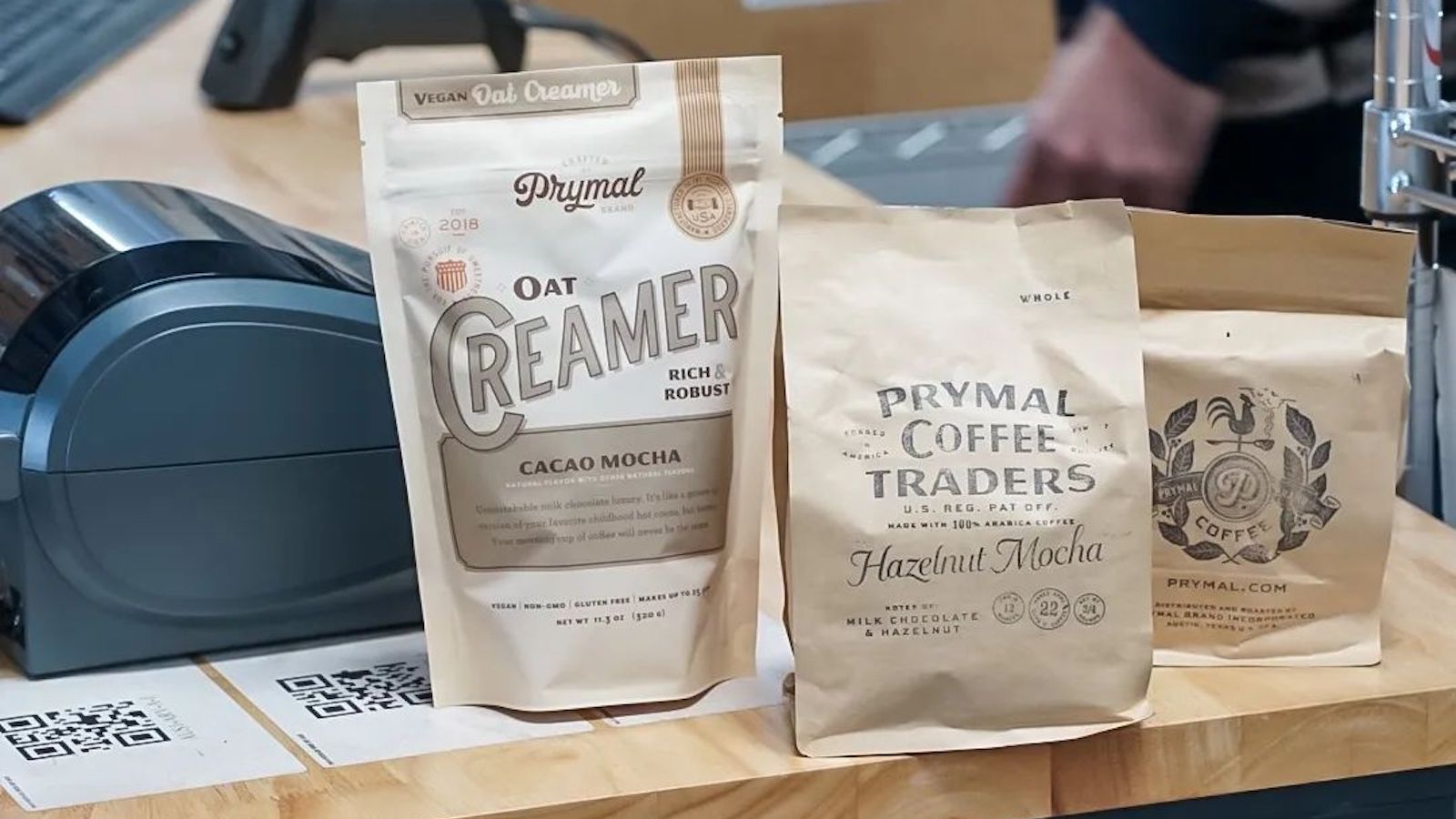Table of Contents
** Minutes
What are supply chain management KPIs?
Tracking & improving your supply chain KPIs is easier than you think
To measure length, you use a ruler. To measure time, you use a clock. To measure a restaurant’s quality, you use stars.
But how do you measure supply chain performance?
Most ecommerce businesses tackle this challenge by relying on Key Performance Indicators, or KPIs. There are dozens of different KPIs that one could use to evaluate your supply chain processes — but with so many options, it can be difficult for businesses to know the right KPIs to track, and which KPIs will give them the most insight.
In this article, we’ll cover what KPIs are, list some of the most useful KPIs ecommerce businesses can track, and show how 3PL partners like ShipBob help you track KPIs, optimise your supply chain, and meet your goals.
What are supply chain management KPIs?
Supply chain management KPIs are the quantitative metrics that a business tracks to evaluate if it is meeting its performance goals.
Each KPI measures a particular aspect of your supply chain operations. By gathering data on that KPI periodically, your business can gain visibility into how close you are to achieving its performance benchmarks, and where there is room for improvement.
Below are some of the most common supply chain KPIs we’ll cover:
- Perfect order rate
- Order fill rate
- Freight bill accuracy
- Inventory turnover
- Gross margin return on investment (GMROI)
- Supply chain costs
- Average delivery time
- Customer order cycle time
- Cash-to-cash cycle time
Top supply chain KPIs
Keeping track of your supply chain KPIs is essential to identify ways in which you can streamline your operations to increase productivity and enhance the customer experience.
However, since there are so many KPIs you could track, it’s essential to focus on the most important ones for your organisation.
Here are some of the most informative supply chain KPIs for ecommerce businesses, formulas for calculating them, and tips for improving them.
Perfect Order Rate
Perfect order rate measures the percentage of your orders that are delivered to the right customer at the right time, without error. Errors include shipping or delivery delays, damaged goods or fulfilment mistakes, and a lack of full documentation.
The Perfect order rate KPI is the summation of smaller KPIs, each of which measures a more specific aspect of your order rate. Some of these sub-metrics include:
On-time delivery rate
On-time delivery rate is the percentage of orders delivered on or before the original estimated delivery date. In a world where customer satisfaction hinges on speedy delivery, this KPI lets you see how well you are meeting customer’s expectations.
To improve your on-time delivery percentage, be sure to capture late delivery reasons and address those issues as quickly as possible. In addition, consider re-evaluating your last-mile carrier partnerships, or partner with a logistics provider that offers guaranteed 2-day shipping.
Formula: (Number of on-time orders / Total number of orders) x 100 = On-time delivery
Damage-free delivery
This supply chain KPI helps you track the percentage of orders that are delivered without any damages. A low damage-free delivery rate is a sign that you need to review your packing process or even reassess your shipping partner.
You can also improve this KPI and prevent shipping damages by using the correct box size, wrapping items carefully, and using necessary protection.
Formula: [(Total number of orders – Number of orders that arrive damaged) / Total number of orders] x 100 = Damage-free delivery
Order fill rate
Order fill rate is the percentage of orders that are successfully completed in the first shipment without requiring split shipments. It’s an important KPI for measuring the efficiency of your supply chain operations, and it correlates strongly with customer satisfaction.
Automating order management and fulfilment processes and optimising your inventory management are essential for improving these numbers.
Formula: (1 – [(Total items ordered – Total items shipped) / Total items ordered]) x 100 = Fill rate
Freight bill accuracy
As the name suggests, freight bill accuracy is the KPI used for measuring whether your shipping bills have the correct information such as pricing, items, amounts, and weights. Any error in your freight bills can negatively affect your cash flow and harm the customer experience.
Automating the invoicing and billing process or outsourcing freight management to the experts can help you keep this rate high.
Formula: (Number of correct freight bills / Total freight bills) x 100 = Freight bill accuracy
Inventory turnover
Inventory turnover measures the number of times your entire inventory is sold and replenished within a specific period. A high inventory turnover rate is a good sign that your business is doing well in terms of sales.
To improve low inventory turnover, focus on forecasting demand more accurately so that you can invest in inventory that has a higher chance of being sold quickly. In addition, optimising your order management process for efficiency speeds up the order life cycle and helps keep inventory moving.
Formula: Cost of goods sold / Average inventory value = Inventory turnover rate
“We roll out new products and designs on our website 1-3 times a month and send new inventory to ShipBob each week. It’s really easy to create new SKUs and restock existing ones using ShipBob’s technology, which is especially important with high inventory turnover.”
Carl Protsch, Co-Founder of FLEO
Gross margin return on investment (GMROI)
GMROI measures how much money was made from selling certain inventory investments. This is a good metric for assessing your profitability, and to determine which products are selling well (enabling you to optimise inventory planning and procurement).
A GMROI between 200 and 225 is respectable. If it is not up to this standard, try cutting inventory carrying costs or adjusting pricing to help you bottom line, or improving forecast accuracy to facilitate wiser inventory investments.
Formula: (Gross profit / [(Opening inventory – Closing inventory)] x 2] x 100 = GMROI
Supply chain costs
As the name suggests, this KPI measures how much it costs to keep your supply chain operations running. It is often broken down into two separate KPIs:
Supply chain cost as a percentage of sales
This KPI compares the total cost of managing supply chain operations to your overall monetary gains from sales.
Formula: (Total supply chain cost / Total monetary amount gained from sales) x 100 = Supply chain cost as a percentage of sales
Supply chain cost per unit sold
This KPI measures the average supply chain cost it takes to procure and sell one unit of a particular product (within a certain time frame).
Formula: (Supply chain cost for a product / Number of units sold of the same product) = Supply chain cost per unit sold
The best way to reduce supply chain cost is to get rid of inefficiencies in your supply chain operations. Automating routine warehousing tasks reduces labour costs, optimising inventory management reduces holding costs, and strategically distributing inventory can drastically lower shipping and transportation costs.
Outsourcing to a 3PL often secures these cost-savings without requiring you to spend time implementing these changes yourself.
Average delivery time
Average delivery time measures the average time full delivery takes — that is, the number of days between when an order is shipped out of your fulfilment centre to when that order arrives on a customer’s doorstep. This is an important metric to track because it gives a business a sense of their shipping speed.
With the rise of 2-day delivery, online shoppers now expect a quick turnaround time on their orders. Expedited shipping lowers average delivery time, but can be too expensive for smaller brands to rely on long-term.
Many ecommerce businesses subsequently choose to improve average delivery time by strategically placing parts of their inventory physically closer to end customers.
The right 3PL partner will advise you on which strategy is best for your business, and will have the infrastructure to support both 2-day shipping and distributed inventory.
Formula: Total days to deliver all orders / Total number of orders delivered = Average delivery time
Customer order cycle time
The customer order cycle time measures the time between when a customer places an order and when that customer receives their order.
Ideally, your business should keep customer order cycle time as low as possible, as a short wait-time delights customers and indicates that your supply chain is highly efficient.
Automatically forwarding each order to the fulfilment centre closest to its destination can drastically reduce customer order cycle time. Speeding up backend operations by streamlining warehouse management SOPs and reassessing shipping carrier performance may also help shorten the cycle.
Formula: Delivery Date – Date of Purchase Order Creation = Customer order cycle time
Cash-to-cash cycle time
This supply chain KPI measures the time elapsed between doling cash out for raw materials and ultimately receiving cash in for selling the inventory made from those same raw materials.
A short cash-to-cash cycle time is a good indicator that you’ve built a lean supply chain that is on pace to increase profitability over time.
To improve cash-to-cash cycle time, you’ll need to minimise the chances that your inventory will become deadstock, as obsolete inventory usually takes ages to sell (if at all) and grinds your cash flow to a halt. Better inventory forecasting can remedy this, as it enables you to identify and stock up on more popular SKUs.
Formula: Inventory outstanding days + Sales outstanding days – Payables outstanding days = Cash-to-cash cycle time
Tracking & improving your supply chain KPIs is easier than you think
With so many key supply chain metrics to measure, it may feel overwhelming to keep track of your supply chain performance — but with the right tools, tracking and analising KPIs gets much easier.
Software platforms designed for supply chain management give you real-time visibility into important KPIs such as inventory levels, SKus, and inventory turnover, which makes tracking metrics simple and straightforward.
The best SCM software programs have analytics dashboards where vital supply chain metrics and insights are compiled and visible at a glance, as well as tools to help you pull insights from collected data.
This degree of visibility also helps businesses improve their performance on many KPIs. With up-to-date information that’s automatically tracked and readily available, you will be better equipped to accurately forecast demand, and inventory needs and identify areas for improvement quickly.
“We are very impressed by ShipBob’s transparency, simplicity, and intuitive dashboard. ShipBob’s front-end software was the primary decision-making factor for me in choosing them over other fulfilment solutions.
Their software is so simple and intuitive, especially as so many 3PLs have either bad or no front-facing software, making it impossible to enter orders, keep track of what’s leaving or entering the warehouse.
It’s fun to see orders shipping out instantaneously. I love how fast and efficient ShipBob is. Their shipping costs are very reasonable, and their platform makes fulfilment feel so easy.”
Harley Abrams, Operations Manager of SuperSpeed Golf, LLC
Optimising your supply chain with ShipBob
As a tech-enabled 3PL, ShipBob has the infrastructure and technology businesses need to track and improve KPIs across their entire supply chain.
ShipBob’s inventory management software helps you manage inventory and monitor key metrics remotely, and gives you inventory control without the burden of self-storage.
Through your ShipBob dashboard, you have the visibility to track inventory levels and turnover, follow your inventory through your supply chain, and find the information needed to calculate GMROI.
As soon as you receive orders, ShipBob’s fast and accurate order fulfilment services speed up supply chain operations without sacrificing quality. This improves order cycle time, fill rate, and perfect order rate, all of which you can monitor through your analytics dashboard.
When it comes time to ship orders, ShipBob’s 2-Day express program and fulfilment centre network enables you to cut down your average delivery time while boosting you on-time and damage-free delivery rates.
Altogether, ShipBob’s software and support capabilities help ecommerce businesses minimise their supply chain costs and improve efficiency — making it easier than ever for your business to track, analyse, and meet your KPIs.
Supply chain KPI FAQs
Here are answers to the most common questions about supply chain key performance indicators.
What are the most important supply chain management KPIs?
The most important KPIs in the retail supply chain include on-time delivery rate, fill rate, freight bill accuracy, inventory turnover, gross margin return on investment (GMROI), supply chain costs, average delivery time, damage-free delivery, customer order cycle time, and cash-to-cash cycle time.
Can ShipBob help with KPIs?
ShipBob provides real-time inventory tracking and visibility into order fulfilment and shipping KPIs including total orders placed, orders fulfilled, on-time fulfilment rate, fulfilment cost, average fulfilment cost per order, average revenue per order, and average transit time.
How can you track KPIs?
You can track KPIs with the help of supply chain management platforms that provide comprehensive analytics dashboards.
Do KPIs help with supply chain management?
KPIs help with supply chain management by measuring supply chain efficiency and identifying opportunities for optimisation.
How do you measure supply chain performance?
You can measure supply chain performance by identifying the key performance indicators you want to track and using analytics reporting tools to track these metrics.
What KPIs does ShipBob use?
ShipBob uses several KPIs to help with supply chain transformation, including storage costs, fulfilment turnaround time, transit time, SKU performance and velocity, inventory distribution, and total monthly costs.



